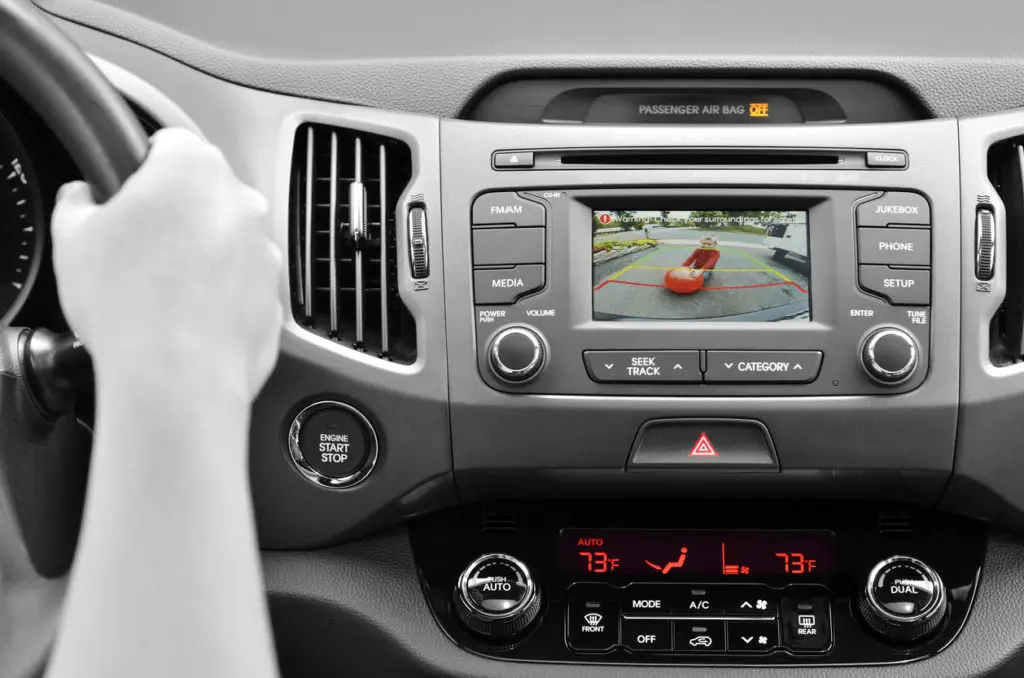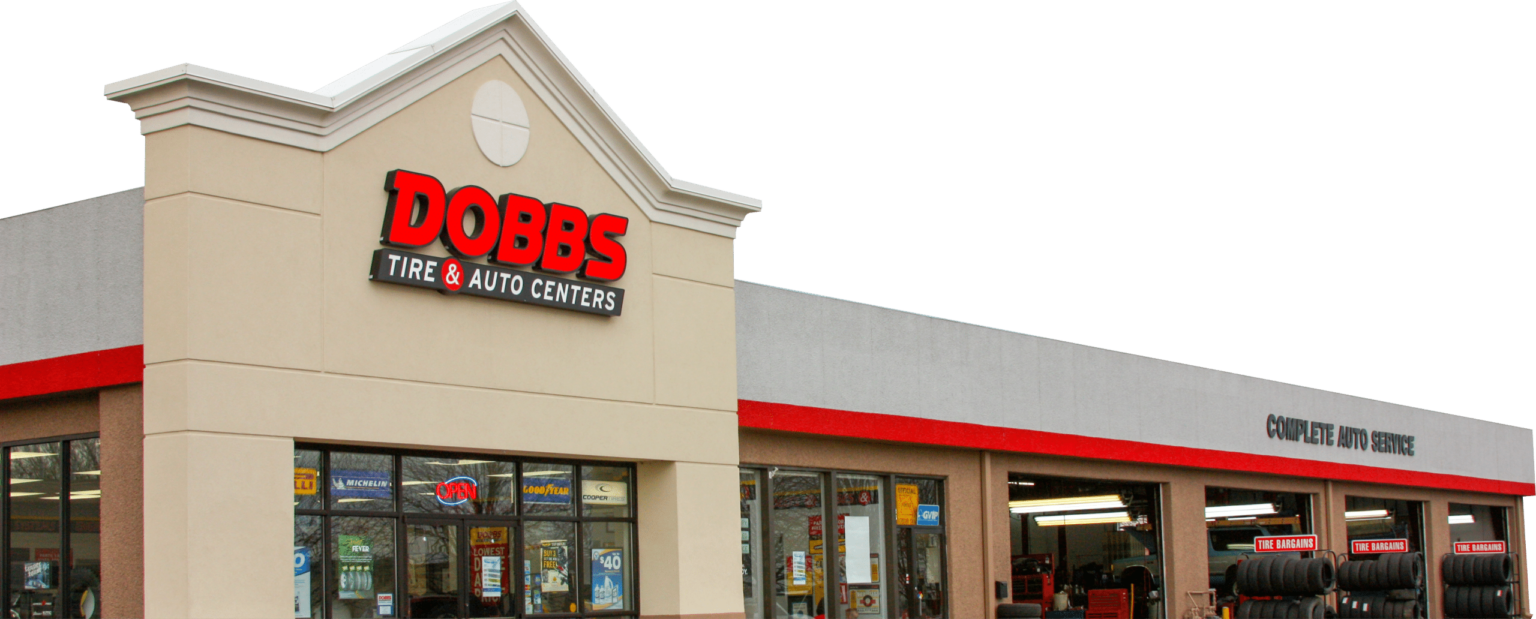How Vehicle Safety Systems Work – Part II

“Backup camera justification, camera showing a child playing with the ball in the place out of reach to mirrors, selective colour with a focus on the screen and child.”
Previously, we talked about a few vehicle safety systems that you’re likely to find on a modern vehicle and how they work. We covered the basics on anti-lock brakes, brake assist, seatbelt pretensioners, forward collision warning, automatic emergency braking, and post-collision automatic braking, but there are many more. Here are a few more vehicle safety systems that are at work keeping drivers, passengers, pedestrians, and animals safer on the roads, today.
Adaptive Cruise Control
While most cruise control systems simply maintain a certain speed, they cannot adapt to changing circumstances, such as coming up on congested traffic or someone moving too close in lane ahead of you. Adaptive cruise control uses radar to monitor the distance between you and the vehicle in front of you.
If you set adaptive cruise control to 60 mph, and you come up on a car doing only 55 mph, the system will automatically let off the accelerator to reduce speed to 55 mph. If that car moves out of your lane or speeds up, the system will automatically increase speed to 60 mph. Some adaptive cruise control systems can even apply the brakes to slow the vehicle, in case letting off the accelerator isn’t enough. Newer systems can automatically keep up with the flow of traffic, even in stop-and-go congestion situations.
Traction Control
While ABS keeps your wheels from locking up and losing their grip on the road, traction control does much the same thing, except that it keeps your wheels from spinning out of control. On a slippery surface at low speed, such as taking off on snow or gravel, spinning wheels prevent you from accelerating and moving your car.
Using wheel speed sensor data, the traction control system determines if one or more wheels has lost traction. If a wheel lose traction, the traction control system may apply the brake to that particular wheel, reduce engine power, or command a transmission upshift. One or more of these actions usually is enough to prevent wheel spin, force power to the wheels with more traction, and get you moving.
Electronic Stability Control (ESC)
Whereas traction control usually works only at low speeds, generally less than 15 mph, electronic stability control (ESC) works at high speeds. The ESC system may have different names, depending on the automaker – Ford has AdvanceTrac, and Jaguar as Vehicle Dynamic Control – but they’re all designed to keep drivers on the road.
Using a bevy of sensors, such as those measuring steering wheel angle, vehicle speed, g-forces, and throttle position, ESC can determine the driver’s intended path. If electronic stability control detects that the vehicle is losing traction, it can reduce engine power or apply individual brakes to help you get your vehicle back on track.
Blind Spot Warning (BSW)
Driver visibility to the rear of the vehicle has always been a problem. Even if you use your mirrors and turn your head, there are still places you cannot see. Most vehicles have blind spots just to the outside rear corners, enough space to hide a motorcycle or an entire semi-trailer, depending on the vehicle. If you attempt a lane change, you could cut someone off or hit their nose, putting yourself into a dangerous situation. Convex blind-spot mirrors are a low-tech solution to the problem, greatly expanding the driver’s view to the rear sides of the vehicle, and you can install them on practically any vehicle on the road.
Newer vehicles may employ sonar or radar BSW to detect if there is anything in your blind spot, indicating the presence of an obstacle with a warning light on the dash or on the mirror. Some vehicles even use cameras to display blind-spots right on the multimedia screen. More advanced BSW systems may sound an alarm or use electronic power steering to nudge you back into your lane and avoid a collision.
Backup Camera
Backing up can be dangerous, as proven by thousands of backup collisions, accidents, injuries, and fatalities every year. While side-view and rearview mirrors help, but they don’t give you the whole picture. Even turning your head doesn’t give you the whole picture, and you could easily hit something in your blind spot. Usually, bigger vehicles have bigger blind spots, but vehicle design plays a big part, easily creating blind spots behind your vehicle.
To really give you a clear picture of what’s behind your vehicle for backing up, the backup camera system turns on when you put your car in reverse, projecting an image on the multimedia display in the dash. Aftermarket alternatives are available, too, complete with a portable monitor. More sophisticated versions of the backup camera are integrated with the steering, displaying guidelines to help you back into a parking space.
Parking Assistance
Before the backup camera, and sometimes installed alongside backup camera systems, parking assistance systems enabled drivers to refine their parking skills. Using sonar transceivers mounted in the rear bumper, and sometimes the front, the parking assistance system measures the distance to any obstacles. An audible warning is given as the driver gets closer to an obstacle, rising in pitch or speed as the distance closes.
Dobbs Tire & Auto Centers Has Your Back
The protection that vehicle safety systems offer cannot be underestimated, and have prevented countless accidents since their adoption. Some of these might even reduce your insurance premiums. If you have questions or concerns about vehicle safety systems on your vehicle, consult the professionals at Dobbs Tire & Auto Centers. We’ve been serving the St. Louis area for over forty years, we are family owned and operated, and we want your car to be as safe as it can be. Call or stop in one of our 45 locations, today, and speak to one of our associates.
